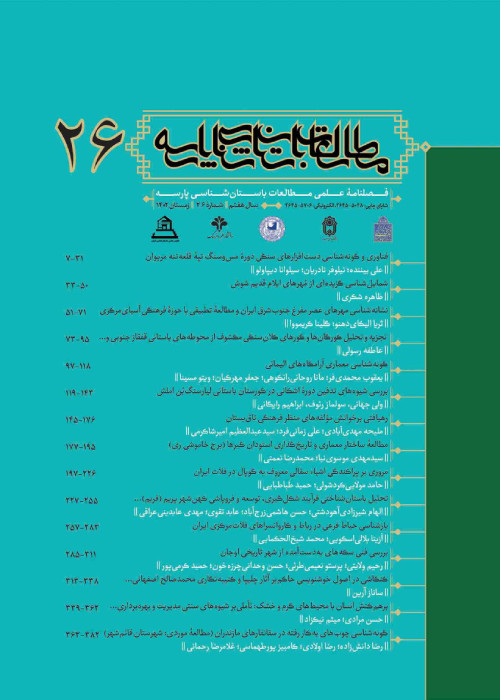Recovering the Characteristics of the Shiraz Painting School in Painting of Al-Inju and Al-Muzaffar Period and its Impact on Iranian Painting
Throughout Iran’s history, there have been governments, however large and small, of local rulers and rulers that have been the source of significant influences in the history of our country’s art and civilization. These local rulers are not well-known throughout history, among them the local government of Al Inju and then al-Muzaffar. After the collapse of the Ilkhanid dynasty in Iran, the regions of Kerman, Yazd, and Fars were presented with a competition between the two families claiming al-Inju and Al-Muzaffar. However, the period of the local rule of Al Inju and Al-Muzaffar is bed into significant artistic and cultural developments, which can be seen in Shiraz’s orthography. This is because the remaining copies of the book-layout of Al-Inju and al-Muzaffar are proving to this claim. The question is: What effects has Shiraz’s painting school had on the Iranian Painting art during Al-Inju and Al-Muzaffar? The method of this research is descriptive-analytical with library data collection. Case studies are paintings of Shahnameh version 733 AH in the Russian National Library in St. Petersburg and Shahnameh 731 AH in the Topkapi Museum of Istanbul, Turkey, and Shahnameh Qavam al-Din Hasan 741 AH, all belonging to the Al Inju period, as well as paintings of the 771AH Shahnameh, exists in the Topkapi Library of Istanbul in Turkey, as well as the Khamseh Nezami version, in the late 8th century related to the Al-Muzaffar period in the National Library of Paris. Studying the characteristics based on formal, structural, and themes of Shiraz Artography during the Period of Al-Inju and Al-Mozaffar, the effects of Shiraz Painting School on the art of painting are distinguished. Based on the results of this research, al-Inju’s paintings were under the effect of the tradition of old Iranian painting (reminiscent of Sassanid graffiti) and visualization of Ferdowsi’s Shahnameh and it’s martial scenes, and the use of specific tables for writing parts (calligraphy), the illustration of lyrical systems in the Period of Al-Muzaffar, the application of brilliant colors in the painting of Al Inju and Al-Muzaffar have had a tremendous impact on Iranian Painting in the later era.
- حق عضویت دریافتی صرف حمایت از نشریات عضو و نگهداری، تکمیل و توسعه مگیران میشود.
- پرداخت حق اشتراک و دانلود مقالات اجازه بازنشر آن در سایر رسانههای چاپی و دیجیتال را به کاربر نمیدهد.




